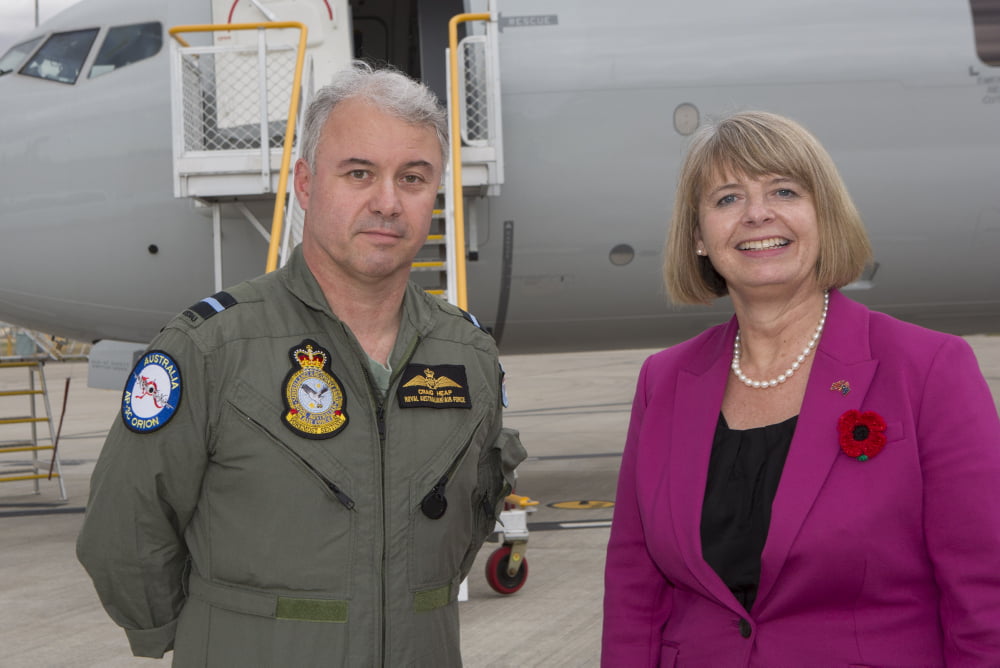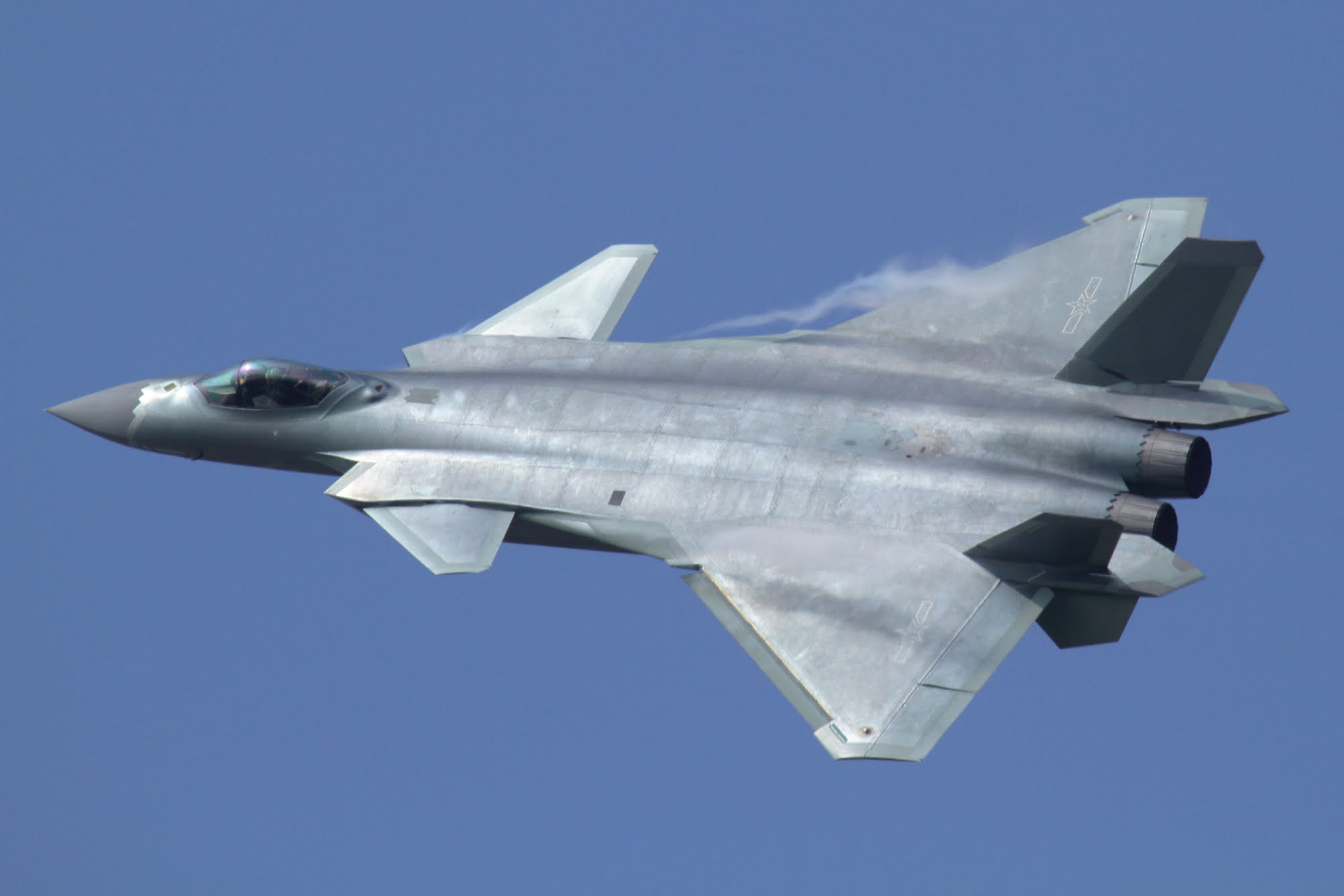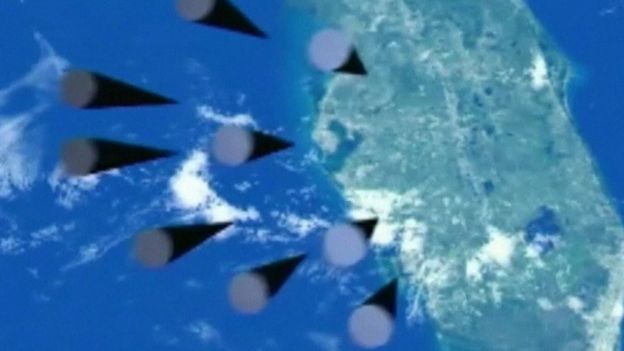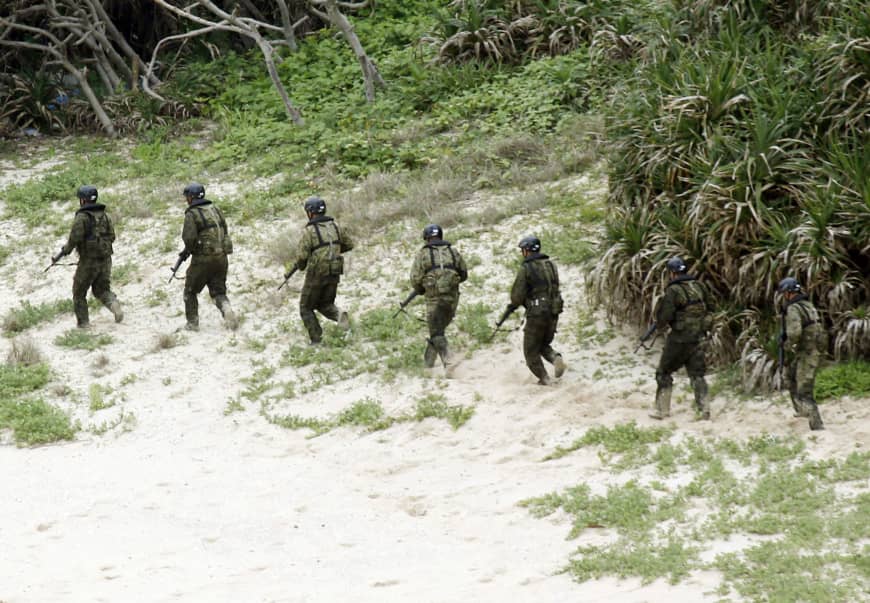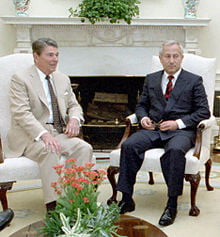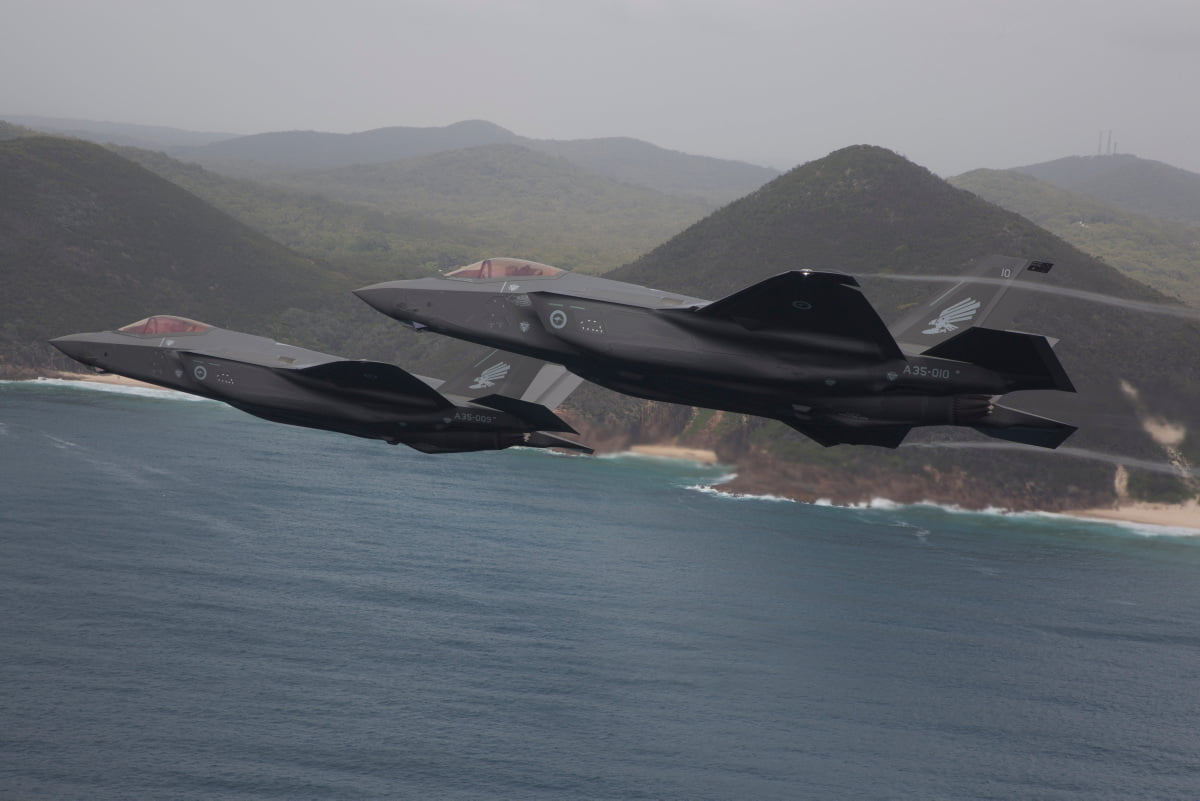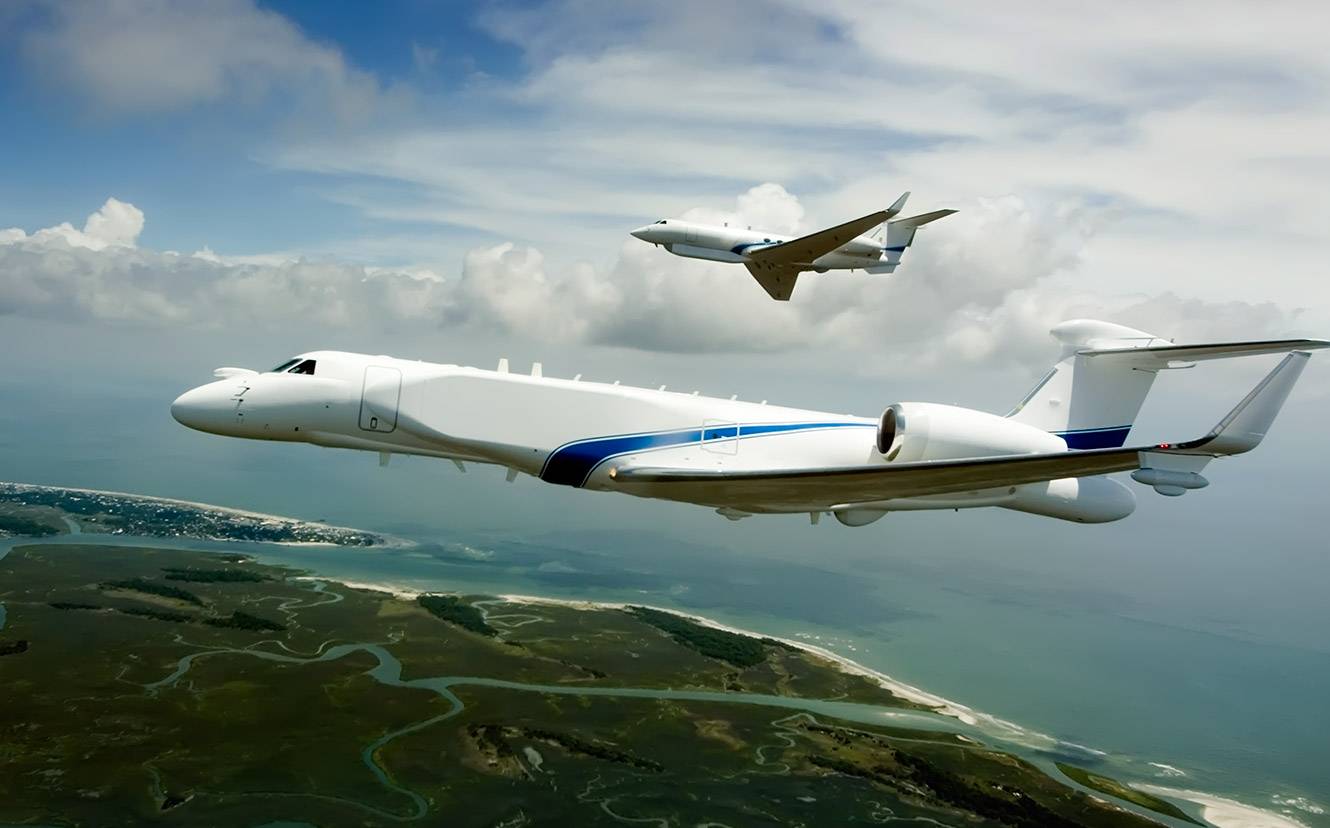By Robbin Laird
I am writing a three-part series to deal with some lessons learned from the 1980s which provided some insights with the current challenge of dealing with Russia.
The Cold War is over; but the Russians are back.
This is NOT the Cold War; and we do not need the same force structure or approach to deal with today’s Russians. But there are some key similarities which require looking back enough to understand where Putin is coming from.
For he unlike Presidents Macron or Trump or Prime Minister Mey was steeled in this period of conflict between the Soviet Union and the West and the eventual collapse of the Soviet Union.
Secretary Kerry referred to Russian actions in Crimea as from the 19th Century. Actually, its roots are much closer and much less comfortable than such a comment of disdain would imply.
Recently I read the 2018 book written by Ben Macintyre about the Gordievsky Affair or as the title calls it, “the greatest espionage story of the Cold War”.
I then re-read the book dealing with the other greatest espionage story of the Cold War, namely the Farewell Affair.
This gave me an opportunity to think about the concurrent impact of the two operations on how cooperation in the West had its impact on the Soviet Union and its leadership.
One operation was run by the British; the second was run by the French.
Clearly, the United States was a major beneficiary of both operations, and without the ability of the heads of state to work together and to establish a working relationship among competent aides this would not have happened.
In this piece, I will review the Macintyre book; in the second, the book on the Farewell Affair.
And then in a third piece I will discuss both operations and their collaborative impact as well as the importance of how Western governments worked with one another to create a significant impact on the Soviet leadership.
There are clear lessons to be learned here for the current set of Western leaders more set on conflict than cooperation, which frankly only benefits President Putin. And that is no accident, for Vladimir Putin was a key student of geopolitics during the 1980s when the two spy stories played out.
Clearly, President Reagan came to power with a focus on challenging the Soviet leadership and end the kind of détente which had preceded him.
But without British and French cooperation and contributions through standing tall in the Euromissiles crisis, which was very visible, and through the inflow of information from inside the Soviet Union from the two separate espionage operations this would not have happened, certainly the way they did.
The book starts by reminding us that although this about the history of the 1980s, in some ways it is not simply that.
“There is no such thing as a former KGB man,” the former KGB officer Vladimir Putin once said.
Gordievsky came from a KGB family with his father having served faithfully through the hard days of the 1930s, and his older brother as well. He started by being a paper pusher in the agency but was finally able to serve in the West in terms of running agents in the West.
While in Denmark, Gordievsky observed the rise and fall of the Czech reform movement, viewing the movement favorably but very disappointed in the Russian crushing of the rebellion.
What he did not know from his post in Copenhagen was that his brother was playing a role in crushing the Czech “Spring.”
“The older Gordievsky brother was at the forefront of KGB efforts to defame and destroy the Prague Spring; like his father, he never questioned the rectitude of what he was doing.”
The crushing of the Czech reform movement and the end of the Czech spring was a turning point for the younger brother.
“Oleg Gordievsky was appalled and disgusted. As angry Danish protestors gathered outside the Soviet embassy in Copenhagen to denounce the invasion, he felt a deep shame. Witnessing the building of the Berlin Wall had been shocking enough, but the invasion of Czechoslovakia offered even more blatant proof of the true nature of the regime he served. Alienation from the Communist system turned, very swiftly, to loathing: “This brutal attack on innocent people made me hate it with a burning, passionate hatred.”
Gordievsky then returned to the Soviet Union only to return to Copenhagen in 1972. In the meantime, British intelligence had learned from the Danes that in their view Gordievsky could be turned.
“In his new role as a political-intelligence officer, Gordievsky would no longer be running illegals, but actively gathering secret intelligence and trying to subvert Western institutions. In practice this meant seeking out, cultivating, recruiting, and then controlling spies, contacts, and informants.
“These might be Danish government officials, elected politicians, trades unionists, diplomats, businessmen, journalists, or anyone else with privileged access to information of interest to the Soviet Union. They might even, ideally, work in Danish intelligence.”
This meant as well that his new job would allow him an opportunity to switch sides if he was so inclined and that what was to happen.
A key role for the KGB in the West was as well was the generation of their own version of the news and seeking out friendlies in the West who would spread their version of the news. The means today are a bit different but the strategic goal is the same.
“The KGB had long excelled in the dark art of manufacturing “fake news.” Under KGB taxonomy, foreign contacts were classified in order of importance: at the top was an “agent,”
After a several months courtship, MI6 had recruited Gordievsky and agent “sunbeam” was now operational.
By 1973, the moment had come for MI6 to pull a Kim Philby in reverse strategy on the KGB with Gordievsky. He would provide information which would expose spies in both Norway and Sweden working for the Soviet Union.
During this time in Denmark his marriage was coming apart and new love relationship developing. Divorce in the KGB was usually a career killer so his personal life was threatening his promotion paths within the KGB.
As he was producing significant high-grade information delivered by a camera system, MI6 was starting to focus on how they would get their spy out when discovered. If operating in the West this would not be difficult; but if he were to return to the Soviet Union this would be virtually impossible. This indeed what they would do a decade later which also is a remarkable aspect of his case.
An exfiltration plan was worked out in case Gordievsky returned to Moscow.
“The plan envisaged that at 7:30 p.m. every Tuesday when Gordievsky was in Moscow, a member of the MI6 station would “police” the signal site. The spot was actually visible from parts of the housing complex; an MI6 officer would head out with the excuse of buying bread or time his return from work to be passing the site at exactly the right moment.
“The exfiltration plan could be activated in only one way: Gordievsky must be standing by the bread shop at 7:30, holding a plastic bag from a Safeway supermarket. Safeway bags bore a large red S, an immediately recognizable logo that would stand out in the drab Moscow surroundings. Gordievsky had lived and worked in the West, and there would be nothing particularly remarkable about his holding such an object. Plastic bags were prized, especially foreign ones.
“As an additional recognition signal, Gordievsky should wear a gray leather cap he had recently purchased, and a pair of gray trousers. When the MI6 officer spotted Gordievsky waiting by the bread shop with the all-important Safeway bag, he or she would acknowledge the escape signal by walking past him carrying a green bag from Harrods and eating a chocolate bar, either a KitKat or a Mars bar—“a literally hand-to-mouth expedient,” as one officer remarked.
“The chocolate eater would also be wearing something gray—trousers, skirt, or a scarf—and would make brief eye contact but not stop walking. “Gray was an unobtrusive color, and therefore helpful in averting pattern accumulation by watchers. The downside being that it was all but invisible in the murk of a long Moscow winter.”
Sounds a bit mission impossible like and when it came to execute it there were several bumps in the road to be sure.
Then in the early 1980s, a crucial period in Soviet history, for combating Western politics and the arms buildup, the KGB needed to rebuild their capability in London. They turned to Gordievsky to become a key part of their rebuild in the UK. This would become a crucial moment in terms of the impact of the MI6 spy in the KGB on UK insights into the Russian leadership and would be eventually provided for the PM, Mrs. Thatcher, with a direct view inside Kremlin thinking.
This would provide especially crucial as a NATO planned nuclear exercise was to be misinterpreted as providing for an operation to execute a first strike on the Soviet Union.
It is no small statement that Gordievsky changed history by providing Thatcher and her Western allies with direct intelligence on how Andropov former head of the KGB and now the head of the Soviet Union was preparing a response to what was perceived as a coming US led first nuclear strike on the Soviet Union.
Prior to his taking up his position in the UK, Gordievsky went through the files in Moscow about the UK and discovered a great deal about the “friendlies” who were supportive of the Soviet Union. One file particularly stood out.
“But there was one dossier that stood out from all the others. The cardboard box contained two folders, one three hundred pages thick, the other perhaps half that size, bound with old string and sealed with plasticine. The file was labeled BOOT. On the cover the word “agent” had been crossed out, and “confidential contact” inserted.
“In December 1981, Gordievsky broke the seal and opened the file for the first time. On the first page appeared a formal introductory note: “I, senior operational officer Major Petrov, Ivan Alexeyevich, herewith open a file on the agent Michael Foot, citizen of the UK, giving him the pseudonym Boot.” Agent BOOT was the Right Honorable Michael Foot, distinguished writer and orator, veteran left-wing MP, leader of the Labour Party, and the politician who, if Labour won the next election, would become prime minister of Britain. The Leader of Her Majesty’s Loyal Opposition had been a paid KGB agent.”
The Foot relationship was described by Gordievsky as follows:
“Gordievsky recalled: “Foot freely disclosed information about the Labour movement to them. He told them which politicians and trade union leaders were pro-Soviet, even suggesting which union bosses should be given the present of Soviet-funded holidays on the Black Sea. A leading supporter of the Campaign for Nuclear Disarmament, Foot also passed on what he knew about debates over nuclear weapons.
“In return, the KGB gave him drafts of articles encouraging British disarmament, which he could then edit and publish, unattributed to their real source, in Tribune. There was no protest by Foot to the KGB over the Soviet invasion of Hungary in 1956, and he quite often visited the Soviet Union to a top-level welcome.”
The author provided a rather full analysis of the Foot case and highlighted it with this comment:
“Lenin is often credited with coining the term “useful idiot,” poleznyi durak in Russian, meaning one who can be used to spread propaganda without being aware of it or subscribing to the goals intended by the manipulator. Michael Foot had been useful to the KGB, and completely idiotic.”
On June 28, 1982, Gordievsky landed in London from Moscow beginning a new phase of his career. He arrived with his new wife and his daughters to a new phase of his life, one in which his daughters would become Anglicized and where they still live to this day.
While the UK was working a key MI6 agent within the KGB, the US was undercutting the effort inadvertently by the actions of Aldrich Ames who eventually would provide the KGB with the names of many Western agents working inside the Soviet system. He received money in effect for executing the West’s top agents in the Soviet Union. He would eventually finger Gordievsky so what the book describes is the ticking time bomb of Ames up against what Gordievsky was doing for the UK and the West.
It should be noted that MI6 decided not to disclose the Foot relationship with the KGB to Mrs. Thatcher as she would end up running against him in the general election. They did however set up a working relationship between what they were learning and presenting that in packages presented directly to her.
The most important package of information involved the launching of Operation Ryan by the Soviets.
By the end of the 1970s the West had begun to pull ahead in the nuclear arms race, and tense détente was giving way to a different sort of psychological confrontation, in which the Kremlin feared it could be destroyed and defeated by a preemptive nuclear attack. Early in 1981, the KGB carried out an analysis of the geopolitical situation, using a newly developed computer program, and concluded that “the correlation of world forces” was moving in favor of the West.
“Soviet intervention in Afghanistan was proving costly, Cuba was draining Soviet funds, the CIA was launching aggressive covert action against the USSR, and the US was undergoing a major military buildup: the Soviet Union seemed to be losing the Cold War, and, like a boxer exhausted by long years of sparring, the Kremlin feared that a single, brutal sucker punch could end the contest.
Andropov believed the US was preparing to do just that and launched an operation to prove his “conviction.”
“Like every genuine paranoiac, Andropov set out to find the evidence to confirm his fears. Operation RYAN (an acronym for raketno-yadernoye napadeniye, Russian for “nuclear missile attack”) was the biggest peacetime Soviet intelligence operation ever launched. To his stunned KGB audience, with the Soviet leader, Leonid Brezhnev, alongside him, Andropov announced that the US and NATO were “actively preparing for nuclear war.” The task of the KGB was to find signs that this attack might be imminent and provide early warning, so that the Soviet Union was not taken by surprise.
“By implication, if proof of an impending attack could be found, then the Soviet Union could itself launch a preemptive strike. Andropov’s experience in suppressing liberty in Soviet satellite states had convinced him that the best method of defense was attack. Fear of a first strike threatened to provoke a first strike.
“Operation RYAN was born in Andropov’s fevered imagination. It grew steadily, metastasizing into an intelligence obsession within the KGB and GRU (military intelligence), consuming thousands of man-hours and helping to ratchet up tension between the superpowers to terrifying levels.”
This particular affair underscores the key significance of senior leadership looking for information simply confirming what they already believe to be true rather than allowing for an honest intelligence effort to sort out what is really happening with regard to one’s adversary.
I wish this was an historical comment but it is much more an ongoing challenge in the intelligence and policy worlds. Self-licking ice cream cones for the intelligence to policy worlds can be fatal to both worlds.
“In launching Operation RYAN, Andropov broke the first rule of intelligence: never ask for confirmation of something you already believe. Hitler had been certain that the D-day invasion force would land at Calais, so that is what his spies (with help from Allied double agents) told him, ensuring the success of the Normandy landings”
The author added this priceless comment with regard to the self-licking ice cream cone dynamic.
“In a craven and hierarchical organization, the only thing more dangerous than revealing your own ignorance is to draw attention to the stupidity of the boss.”
This crisis would lead the UK to decide to include the US intelligence community in its findings which would prove nearly fatal to Gordievsky because of Ames but crucial in informing the Reagan Administration of what was going on inside the mind of Andropov.
“The decision to widen the circle of distribution to include the US intelligence community marked a critical juncture in the case. MI6 did not say which part of the world the material came from, or who had supplied it. The source was carefully camouflaged and underplayed, the intelligence packaged in such a way that its origin was obscured.
“The decision was taken to pass filleted, edited material as normal CX [an intelligence report]. We had to disguise the provenance. We said it came from a middle-ranking official, not in London. We had to make it look as bland as possible.”
“But the Americans were in no doubt about the authenticity and reliability of what they were hearing: this was information of the highest grade, trustworthy and valuable. MI6 did not tell the CIA that the intelligence came from within the KGB.
“But it probably did not need to. So began one of the most important intelligence-sharing operations of the twentieth century.
As the process gained steam, the flow of information to the President began to take shape.
“Eventually, as Gordievsky’s espionage haul grew in volume and detail, the intelligence would find its way to the highest levels of the American government, influencing policy within the Oval Office itself. But only a tiny handful of American intelligence officers ever knew that the Brits had a highly placed Soviet mole: one of these was Aldrich Ames.”
Mrs. Thatcher was now reading material from the MI6 spy on a regular basis and she referred to him as Mr. Collins. Meanwhile, the Soviets were on full time attack against Western governments, notably around the Euro-missile conflict.
“The KGB was working hard to try to ensure that Thatcher lost the 1983 general election. In the eyes of the Kremlin, Thatcher was “the Iron Lady”—a nickname intended as an insult by the Soviet army newspaper that coined it, but one in which she reveled—and the KGB had been organizing “active measures” to undermine her ever since she came to power in 1979, including the placing of negative articles with sympathetic left-wing journalists.
“The KGB still had contacts on the left, and Moscow clung to the illusion that it might be able to influence the election in favor of the Labour Party, whose leader, after all, was still listed in KGB files as a “confidential contact.”
In an intriguing harbinger of modern times, Moscow was prepared to use dirty tricks and hidden interference to swing a democratic election in favor of its chosen candidate.
And into this environment, entered Able Archer which was to follow the downing of the Korean airliner by the Russians.
“Into this stew of ferocious mistrust, misunderstanding, and aggression came an event that took the Cold War to the brink of actual war. “ABLE ARCHER 83” was the code name for a NATO war game, held from November 2 to 11, 1983, intended to simulate an escalating conflict, culminating in a nuclear attack.”
Gordievsky provided important insights into Soviet thinking about the exercise and that information was used to modify the exercise to reduce the danger of escalation.
“Margaret Thatcher was deeply worried. The combination of Soviet fears and Reaganite rhetoric might have ended in nuclear war, but America was not fully aware of a situation it had partly created. Something must be done, she ordered, “to remove the danger that, by miscalculating Western intentions, the Soviet Union would over-react.” The Foreign Office must “urgently consider how to approach the Americans on the question of possible Soviet misapprehensions about a surprise NATO attack.” MI6 agreed to “share Gordievsky’s revelations with the Americans.”
“The distribution of NOCTON material moved up another gear: MI6 specifically told the CIA that the KGB thought a war game had been a deliberate prelude to the outbreak of war. “I don’t see how they could believe that,” said Ronald Reagan, when told that the Kremlin had genuinely feared a nuclear attack during ABLE ARCHER, “but it’s something to think about.”
This would provide an input in Reagan’s thinking about Star Wars as well and as what we learned from the Farewell Affair. There was another reason for launching Star Wars, namely, the Russian capability to steal Western technology was being decisively reduced and the ability to compete reduced concurrently as well.
“ABLE ARCHER marked a turning point, a moment of terrifying Cold War confrontation, undetected by the Western media and public, that triggered a slow but perceptible thaw. The Reagan administration began to moderate its anti-Soviet rhetoric. Thatcher resolved to reach out to Moscow.
“She felt the time had come to move beyond the rhetoric of the ‘evil empire’ and think how the West could bring the Cold War to an end,” according to a senior adviser. Kremlin paranoia started to abate, particularly after the death of Andropov in February 1984, and though KGB officers were told to remain alert for signs of nuclear preparation, the momentum of Operation RYAN began to wane.”
In short, the book provides key insights into a crucial historical period. It provides as well insights into how important good working relationships between Western governments are in dealing with the Russian challenge.
It also highlights how important it is to have competent and well-structured working relationships at the policy level.
It was not just about the special relationship between Thatcher and Reagan; it was about the ability as well to have effective working relationship.
And the impact of a mole like Ames on blowing apart the networks is a useful reminder as well of the difficulties of managing a large intelligence structure such as the United States has built.
The deep state has its own problems for sure.
But I can not close before including an interesting comment made with regard to the exfiltration of Gordievsky from Moscow through Finland to Norway to the UK.
When it came to recriminations inside the Soviet system with regard to how the MI6 spy could escape the Soviet Union, a name to become famous in our period pops up.
“Everyone blamed the surveillance team, which, since it occupied the lowest rung of the pecking order, had no one else to blame. The Leningrad KGB, responsible for surveillance of the British diplomats, was held directly accountable, and many senior officers were either sacked or demoted.
“Among those affected was Vladimir Putin, a product of the Leningrad KGB who saw most of his friends, colleagues, and patrons purged as a direct consequence of Gordievsky’s escape.”
This is yet another reminder of Putin’s roots in the 1980s conflicts between the West and the Soviet Union and the learning curve which he has gone through, something which leaders like Mey, Trump, and Macron have not.
Currently, there are only two key leaders with this experience and which each speak the other’s language: Chancellor Merkel and President Putin.
It really never is only history.
The featured photo shows Oleg Gordievsky (right) with U.S. President Ronald Reagan.


